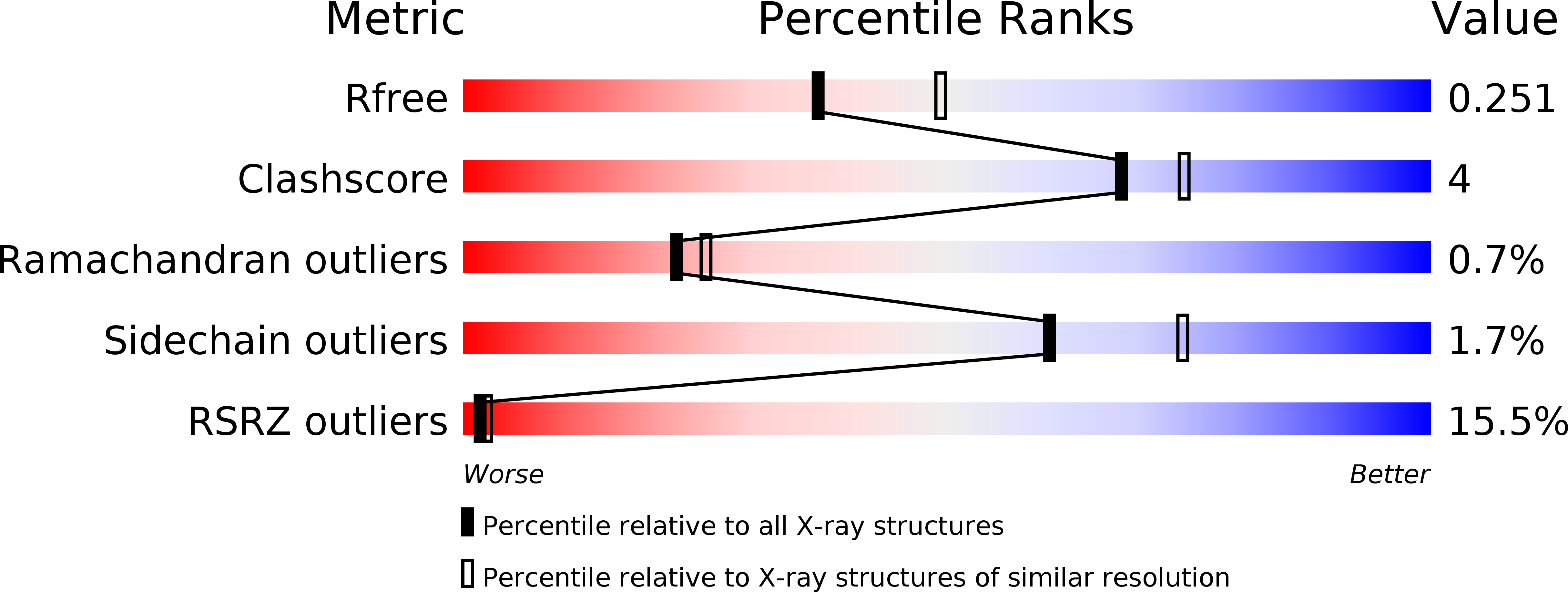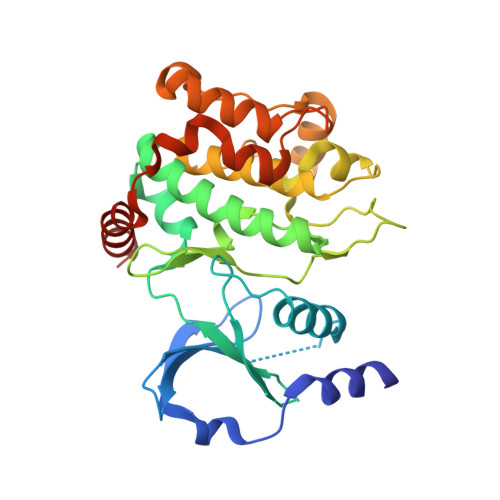Synthesis and evaluation of a series of 4-azaindole-containing p21-activated kinase-1 inhibitors.
Lee, W., Crawford, J.J., Aliagas, I., Murray, L.J., Tay, S., Wang, W., Heise, C.E., Hoeflich, K.P., La, H., Mathieu, S., Mintzer, R., Ramaswamy, S., Rouge, L., Rudolph, J.(2016) Bioorg Med Chem Lett 26: 3518-3524
- PubMed: 27346791
- DOI: https://doi.org/10.1016/j.bmcl.2016.06.031
- Primary Citation of Related Structures:
6B16 - PubMed Abstract:
A series of 4-azaindole-containing p21-activated kinase-1 (PAK1) inhibitors was prepared with the goal of improving physicochemical properties relative to an indole starting point. Indole 1 represented an attractive, non-basic scaffold with good PAK1 affinity and cellular potency but was compromised by high lipophilicity (clogD=4.4). Azaindole 5 was designed as an indole surrogate with the goal of lowering logD and resulted in equipotent PAK1 inhibition with a 2-fold improvement in cellular potency over 1. Structure-activity relationship studies around 5 identified additional 4-azaindole analogs with superior PAK1 biochemical activity (Ki <10nM) and up to 24-fold selectivity for group I over group II PAKs. Compounds from this series showed enhanced permeability, improved aqueous solubility, and lower plasma protein binding over indole 1. The improvement in physicochemical properties translated to a 20-fold decrease in unbound clearance in mouse PK studies for azaindole 5 relative to indole 1.
Organizational Affiliation:
Discovery Chemistry, Genentech, Inc., 1 DNA Way, South San Francisco, CA 94080, USA. Electronic address: wendyle@gene.com.
















